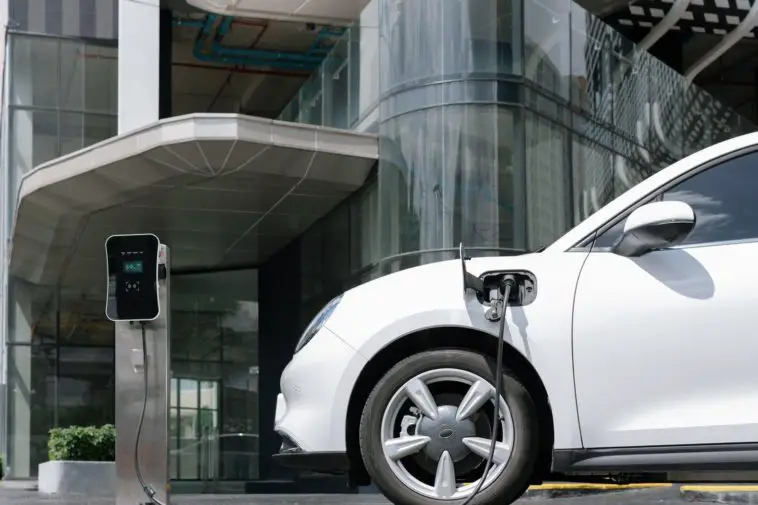Electric vehicles (EVs) are rapidly evolving, becoming symbols of innovation and sustainability. Yet, their heart lies in battery technology, the cornerstone of their development. Imagine the freedom of driving long distances on a single charge and recharging in minutes. This dream hinges on advanced batteries, propelling EVs from niche to norm. As the demand for greener, more efficient transport grows, so does the race to perfect the power source that drives our electric future.
Solid-State Batteries: The Game Changer
Solid-state batteries are set to revolutionize the electric vehicle industry, offering a significant advancement over traditional lithium-ion batteries. But what exactly are they? Essentially, solid-state batteries replace the liquid electrolyte in lithium-ion batteries with a solid material. This seemingly simple change brings monumental benefits, starting with higher energy density. Imagine packing more energy into the same space—this means longer drives without frequent charging stops, translating to a more seamless, worry-free journey.
One of the most compelling advantages of solid-state batteries is their potential to triple the range of EVs. Currently, many electric cars can travel around 300 miles on a single charge. With solid-state technology, this could extend to an impressive 900 miles. Picture driving from New York to Chicago without needing to recharge. This increased range could make EVs a more practical choice for many, easing concerns about running out of power during longer trips.
Durability is another critical improvement. While current lithium-ion batteries typically last for about 5,000 cycles, solid-state batteries could double this lifespan, reaching up to 10,000 cycles. This enhancement means fewer replacements, lower costs over the vehicle’s lifetime, and less environmental impact. Perhaps most striking is the reduction in charging time. Innovative solutions in E-mobility could soon make charging your EV as quick and convenient as filling up a gas tank.
Obstacles and Advantages
One of the most pressing obstacles is the high production cost. Manufacturing solid-state batteries require sophisticated materials and technology, making them more expensive to produce compared to traditional lithium-ion batteries. This cost factor can be a significant barrier to widespread adoption, especially in a market where cost efficiency is critical.
Technological hurdles also present formidable challenges. Solid-state batteries, though promising, are still in the development stage. Engineers and scientists must overcome various technical issues, such as ensuring consistent performance and reliability. Creating a solid electrolyte that works seamlessly with existing EV systems is no small feat. These challenges require extensive research and development, which can be time-consuming and costly.
Despite these challenges, the advantages of solid-state batteries over lithium-ion counterparts are compelling. One of the most notable benefits is their longer lifespan. Solid-state batteries can last up to 18 years, significantly outlasting the 10-year average lifespan of lithium-ion batteries. This extended longevity means fewer replacements and reduced waste, contributing to environmental sustainability.
Enhanced safety features are another significant advantage. Solid-state batteries are less prone to overheating and catching fire, a concern that has plagued lithium-ion batteries. This increased safety can lead to greater consumer confidence and wider acceptance of EVs.
Market Impact and Adoption
The global adoption of EVs is truly taking off. Norway is leading the charge, with a whopping 88% of all car sales in 2022 being electric. China isn’t far behind, producing and selling 29% of the world’s EVs. Europe is catching up with 21%, while the United States is still warming up to the trend at 8%.
The introduction of solid-state batteries could shake things up even more. Imagine buying an EV with the confidence that it’ll last longer, charge faster, and be safer. These innovative batteries can significantly cut the total cost of owning an EV. Think fewer battery replacements and lower maintenance costs over time. This could make EVs a no-brainer for many more people.
As solid-state batteries become more mainstream, we might see a big shift in the market. Consumers might flock to EVs in even greater numbers, boosting their market share globally. This could accelerate the transition to greener transportation, with EVs becoming the go-to choice for drivers everywhere.
The Role of Motorsports in EV Development
Formula E, the all-electric racing series, has become a hotbed for technological advancements. Big names like Porsche, DS, Jaguar, Nissan, Mahindra, and ERT are all heavily involved, using intense competition to push the boundaries of EV technology.
What’s really cool is how the tech developed for these high-speed races makes its way into the cars we drive every day. Take Nissan, for example. Thanks to breakthroughs in Formula E, the Nissan Leaf has seen a staggering 180% efficiency improvement since 2015. That’s not just racing tech; that’s real-world progress you can feel.
Jaguar’s also been busy, using software developed for their Formula E team to boost the battery conservation of their I-Pace by 10%. It’s like getting a free upgrade, all thanks to the racetrack.
And let’s not forget Mercedes. Their EQXX model, which boasts an astounding range of 650 miles on a single charge, owes much of its success to concepts fine-tuned in Formula E. That’s a game-changer for anyone with range anxiety.
Even in the rugged world of rally racing, electric tech is making waves. Audi used technology from Formula E to clinch a victory in the Rali Dakar, showing that electric cars can conquer even the toughest terrains.
What About The Future?
The future of solid-state battery technology is looking incredibly bright. As research and development continue to ramp up, we can expect some pretty exciting advancements. One of the biggest hopes is that these batteries will become even more efficient and affordable. Right now, the high cost of production is a bit of a hurdle, but as with all tech, prices tend to drop as methods improve and scale increases.
Imagine a future where your electric car charges in just a few minutes, lasts for nearly two decades and costs you less in the long run. It’s not just a dream – it’s on the horizon. Experts predict that we could start seeing solid-state batteries in mainstream vehicles within the next decade.
This timeline is encouraging because it means that by the mid-2030s, solid-state batteries could be the norm, making electric vehicles more accessible and practical for everyone. As these advancements roll out, we’ll likely see a significant boost in the adoption of electric vehicles. So, buckle up – the ride into the future of electric mobility is going to be fast, efficient, and incredibly exciting.



